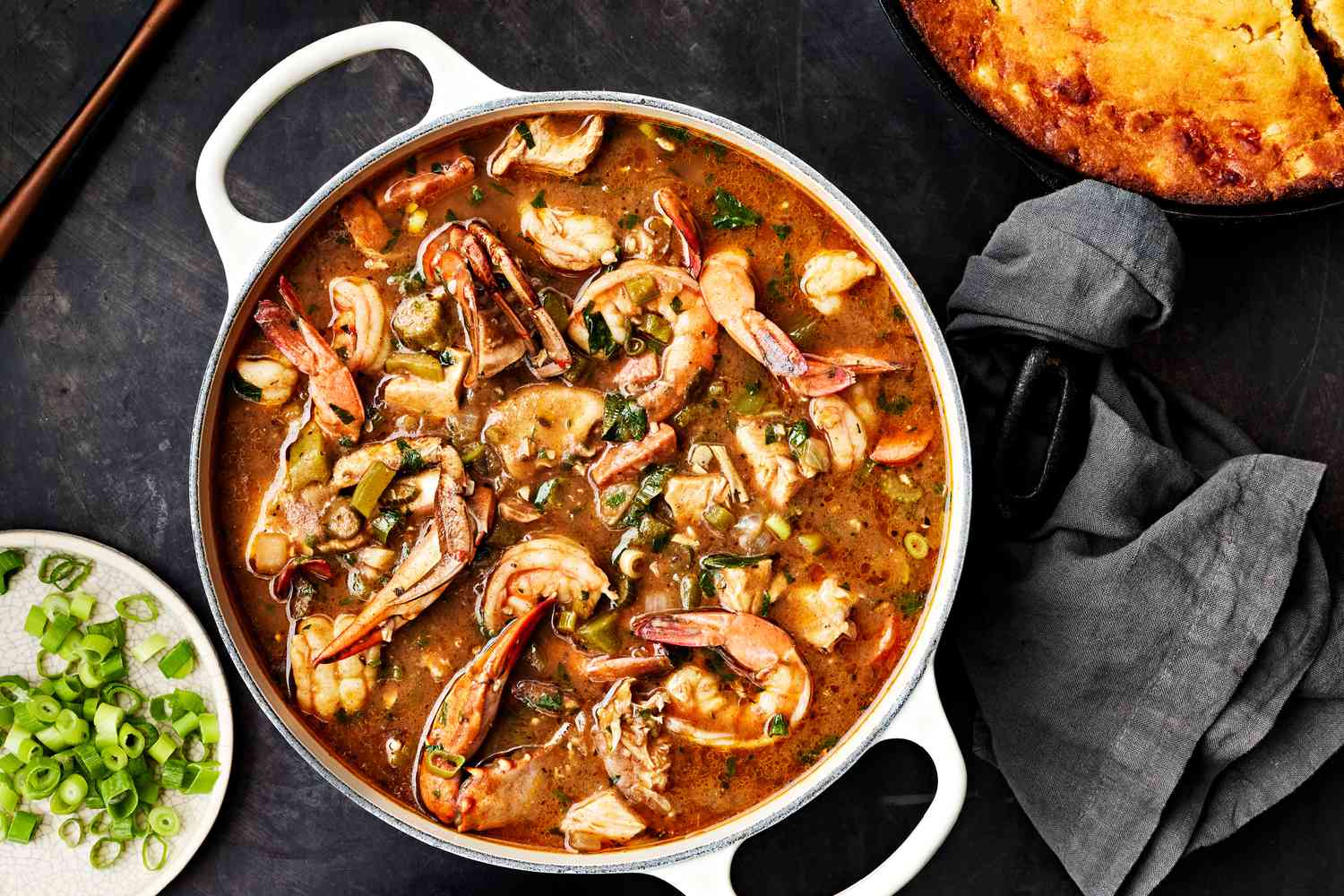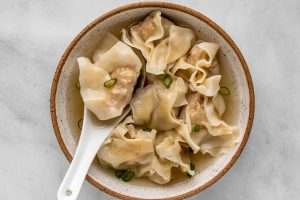
29 interesting facts about Gumbo
- 👁️ 1108
Gumbo is a rich and hearty dish that serves as a staple of Louisiana cuisine, embodying a blend of cultures and flavors that make it uniquely American. This iconic stew or soup combines ingredients and culinary practices from French, Spanish, African, and Native American traditions, creating a complex flavor profile that is both comforting and deeply satisfying. Gumbo typically features a thick base, a variety of meats or seafood, and the “Holy Trinity” of Louisiana cooking: onions, bell peppers, and celery. Its versatility and rich history make it a fascinating subject for culinary exploration. Let’s dive into some interesting and informative facts about gumbo.
- The name “gumbo” is derived from the West African word for okra, “ki ngombo,” highlighting its African origins and the importance of okra as a traditional ingredient.
- Gumbo is often thickened with filé powder, made from dried and ground sassafras leaves, a practice borrowed from Native American cuisine.
- There are two main types of gumbo: Creole gumbo, which typically contains tomatoes, and Cajun gumbo, which does not.
- The first documented recipe for gumbo appeared in 1802, indicating its longstanding presence in Louisiana culture.
- Gumbo has been declared the official state cuisine of Louisiana, underscoring its significance to the state’s identity.
- Seafood gumbo often includes ingredients like shrimp, crab, and oysters, reflecting Louisiana’s rich coastal resources.
- Chicken and sausage gumbo, known as “gumbo ya-ya,” is another popular variation that combines poultry with andouille sausage.
- The introduction of tomatoes to Creole gumbo is attributed to the influence of Italian immigrants in Louisiana.
- Traditionally, gumbo is served over rice, which helps absorb the flavors of the stew and adds texture.
- Gumbo z’herbes, a lesser-known type of gumbo, is a meatless version made with greens and is typically served during Lent.
- The dish’s complexity and variety are a direct reflection of Louisiana’s diverse cultural heritage, including French, Spanish, African, and Native American influences.
- Some historians suggest that gumbo may have been inspired by French bouillabaisse, a type of fish stew.
- The ideal consistency of gumbo is often described as being between a soup and a stew, thick enough to coat a spoon but not so thick as to be porridge-like.
- Filé powder was introduced as a gumbo thickening agent by the Choctaw Indians.
- Gumbo parties, where guests are invited to share a large pot of gumbo, are a longstanding tradition in Louisiana.
- The roux, a mixture of flour and fat cooked together, is the base of most gumbo recipes and is key to developing its rich flavor.
- Okra, a traditional gumbo ingredient, not only thickens the dish but also adds a distinct texture and flavor.
- Gumbo is considered a dish that improves with time, with many cooks preferring to serve it a day after it’s made, allowing the flavors to meld.
- Some versions of gumbo include a hard-boiled egg as an additional ingredient.
- The World Championship Gumbo Cookoff is held annually in New Iberia, Louisiana, attracting chefs and food enthusiasts from around the globe.
- Variations of gumbo exist beyond Louisiana, including Texas and Mississippi, each adding their local flair to the recipe.
- The slow cooking process of gumbo makes it a labor of love, often reserved for special occasions and gatherings.
- Gumbo is traditionally made in large quantities and considered a communal dish, reflecting its role in social and family gatherings.
- The dish’s versatility allows for a wide range of ingredients, making it adaptable to different dietary preferences and available produce.
- Gumbo festivals are held throughout Louisiana, celebrating the dish’s cultural significance and variations.
- The earliest gumbos were likely much simpler than today’s versions, consisting primarily of available local ingredients.
- Beyond its culinary value, gumbo represents the melting pot of cultures that is so characteristic of Louisiana’s history.
- The practice of making gumbo varies greatly from one cook to another, with each claiming their recipe as the most authentic or delicious.
- Gumbo has inspired songs, books, and works of art, becoming a symbol of Louisiana’s rich cultural tapestry.
Gumbo is more than just a dish; it’s a celebration of Louisiana’s diverse history, culture, and culinary traditions. Its complex flavors and rich history offer a taste of the melting pot that is America. Whether enjoyed in a humble kitchen or at a vibrant festival, gumbo remains a beloved symbol of community and heritage. As we explore the nuances of gumbo’s ingredients and preparations, we gain a deeper appreciation for the dish and the many hands that have contributed to its enduring legacy.











